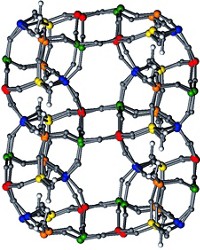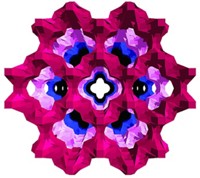Advertisement
Grab your lab coat. Let's get started
Welcome!
Welcome!
Create an account below to get 6 C&EN articles per month, receive newsletters and more - all free.
It seems this is your first time logging in online. Please enter the following information to continue.
As an ACS member you automatically get access to this site. All we need is few more details to create your reading experience.
Not you? Sign in with a different account.
Not you? Sign in with a different account.
ERROR 1
ERROR 1
ERROR 2
ERROR 2
ERROR 2
ERROR 2
ERROR 2
Password and Confirm password must match.
If you have an ACS member number, please enter it here so we can link this account to your membership. (optional)
ERROR 2
ACS values your privacy. By submitting your information, you are gaining access to C&EN and subscribing to our weekly newsletter. We use the information you provide to make your reading experience better, and we will never sell your data to third party members.
Materials
Nafion’s Nanoscale Morphology Revealed
Knowing the classic ionomeric material’s 3-D hydrated microstructure provides insight on its membrane ion-transport mechanism
by Mitch Jacoby
January 5, 2015
| A version of this story appeared in
Volume 93, Issue 1
For decades, DuPont’s perfluorosulfonic acid polymer Nafion has been a standard material used to make membranes in fuel cells, electrolyzers, and other applications—it has impressive ionic conductivity and mechanical and chemical stability. Yet 50 years after first using Nafion, researchers continue to puzzle over its ion-transport mechanism. Even the microscopic morphology of the material, which likely holds the key to understanding that mechanism, remains controversial. Frances I. Allen and coworkers of the University of California, Berkeley, and Lawrence Berkeley National Laboratory may have laid that controversy to rest. The team imaged Nafion for the first time in the hydrated state—which is required for high ionic conductivity—via cryo electron tomography, a technique that provides a three-dimensional view of internal microstructures (ACS Macro Lett. 2014, DOI: 10.1021/mz500606h). By comparing results from dry and frozen hydrated samples, the team found that in the dry state Nafion’s hydrophilic sulfonic acid phase forms spherical clusters 3.5 nm in diameter. Hydrating the polymer transforms the isolated clusters to an interconnected 3-D nanoscale channel network that propagates throughout the membrane.




Join the conversation
Contact the reporter
Submit a Letter to the Editor for publication
Engage with us on Twitter